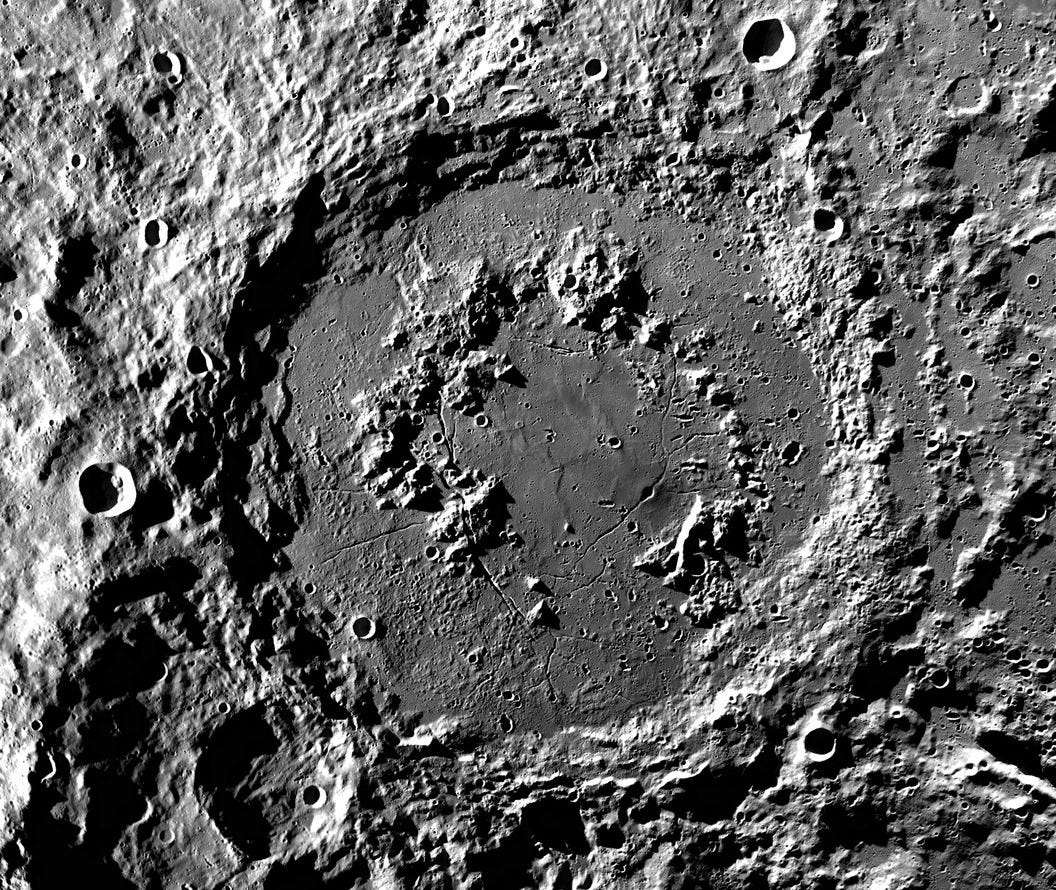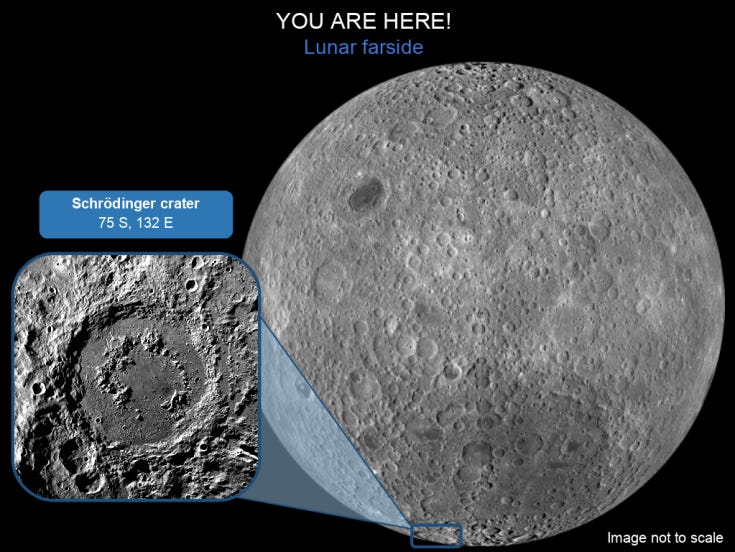The crowned crater of Schrödinger
The best preserved large impact basin on the Moon.
The Moon’s farside hosts the spectacular 312-kilometers wide Schrödinger crater with its crown-shaped mountain ring formed 3.8 to 3.9 billion years ago.

The larger a lunar crater, the more complex the nature of its mountains. Aristarchus and Tycho craters have a single central peak while Copernicus has two peaks. As the crater size increases, the mechanics change such that a mountain ring forms instead just like the case of the Schrödinger crater. This uplifted ring provides an opportunity for surface missions to access materials that originated deep within the Moon’s crust, as well as materials ejected from the larger South Pole–Aitken basin, the Moon’s largest impact feature.
The smooth plains in the central area surrounded by the mountain ring indicate (geologically) recent volcanic activity in the crater, and it might also host well-preserved impact melt meteorites. Several lava channels are also seen running across the crater. Schrödinger basin is well-preserved to provide valuable insights into Moon’s volcanic processes.
Schrödinger is the best preserved impact basin of its kind. Determining its exact age by collecting samples from the crater will help us answer fundamental questions about our Moon, particularly the magma ocean hypothesis, lunar cataclysm hypothesis, how craters form, and how the Moon evolved.
The Schrödinger crater is also special due to its similarities to the Chicxulub crater on Earth, the impact feature linked to the extinction of dinosaurs. Due to active geological processes on Earth, it has lost its original form and most of it is buried. Not the case with Schrödinger on the airless Moon that allows us a good look at what Chicxulub might have been like after forming.
Schrödinger crater is thus a direct example of how studying the Moon helps us better understand Earth. Further, the crater’s rich deposits of iron and titanium are of economic interest for future lunar exploration. Several concept missions have been proposed to characterize and sample material in Schrödinger. Mysteries await to be unlocked.

